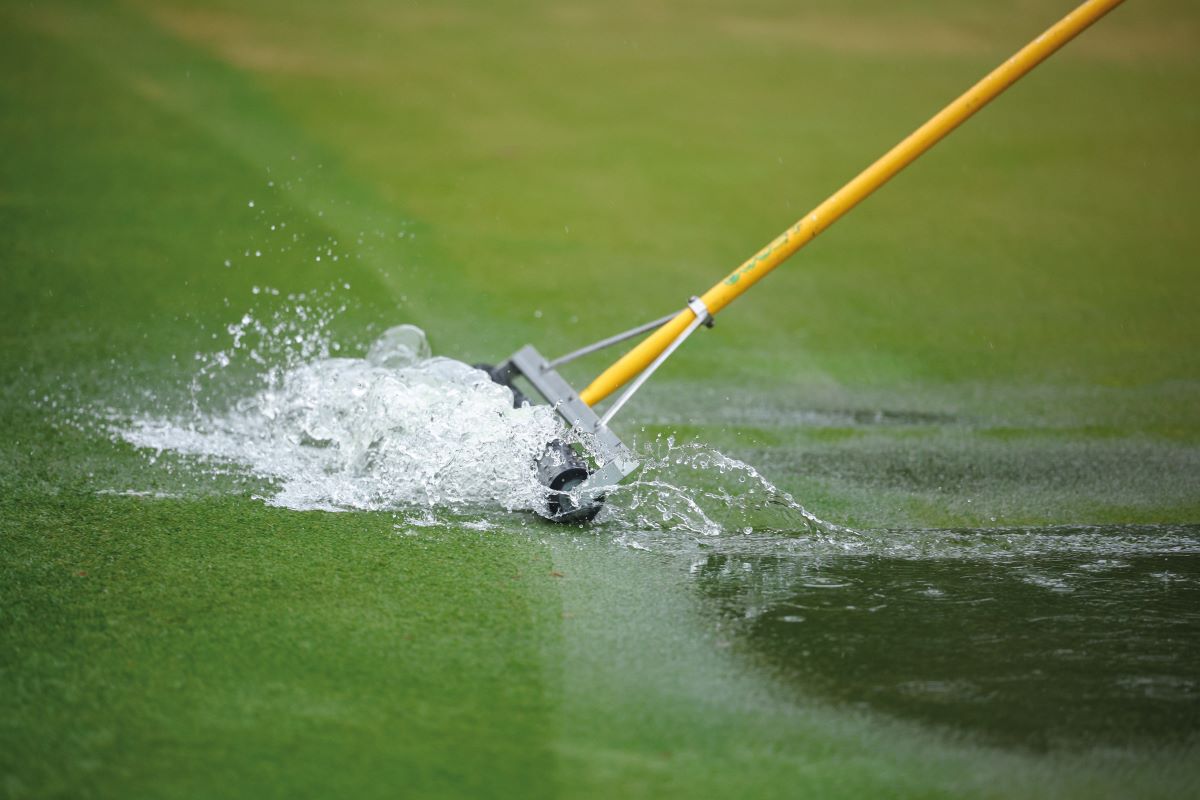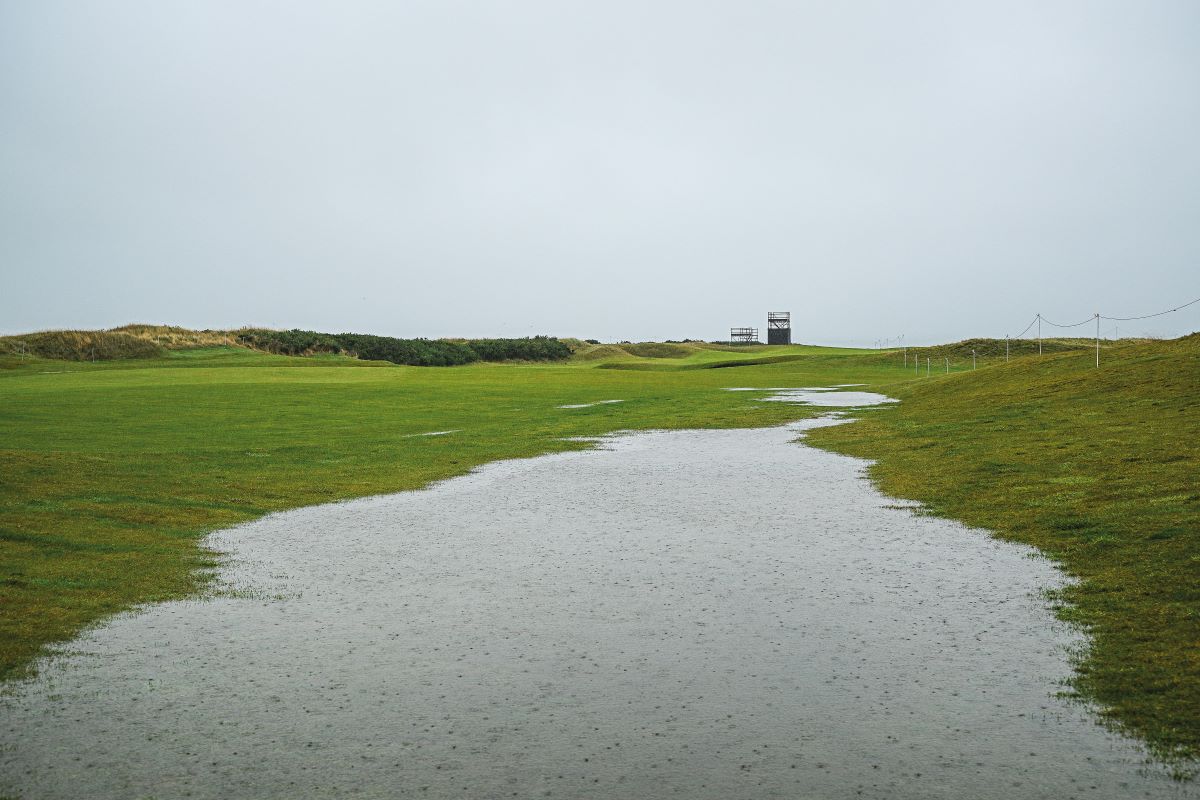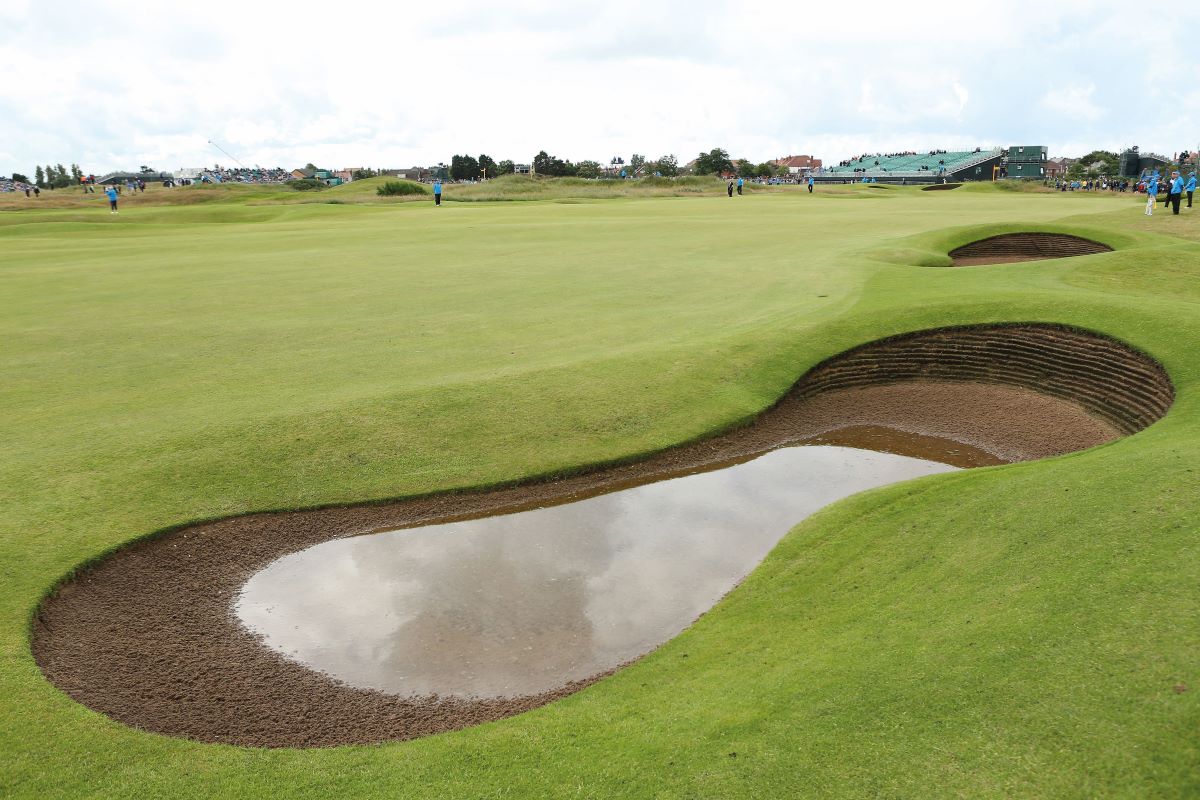- Homepage
- News and Features
- Don’t Sleepwalk into a Water Crisis
Don’t Sleepwalk into a Water Crisis
Greenkeepers are in a prime position to help steer the golf industry through the biggest challenge it will ever face.
That is the view of Owen James, sustainability manager at England Golf, who described water availability and usage as the primary concern for the sector.

Water is variable in its supply and golf facilities lean heavily on artificial irrigation for course maintenance, but that approach is not sustainable. “Without being alarmist, I think it is the biggest issue that golf has or will ever face,” said Owen
“It’s the only resource that every single golf course in the world needs at some point throughout the year. Therefore, if it were to be lost, the ramifications to golf would be absolutely huge. Too many courses are unaware of the problems or not prepared for the changes required, and they are sleepwalking towards a potential crisis.”
With climate change bringing more extreme and less predictable weather patterns, the golf industry is facing uncertain times, but Owen believes the road to sustainability, though fraught with difficulties, is also laden with opportunities. “Golf is uniquely placed, compared to other sports that are played on grass, in that the space we take up and the space that we have to store water means that we’ve got massive opportunities,” he said.
“It’s about taking the necessary steps such that the fluctuations in rainfall are mitigated. For example, your drainage is set up in a way that won’t pose a flood risk during a wet winter, but it will retain enough water on-site during a dry summer. We’ve certainly had enough rain recently. I had a greenkeeper email me and say he’d calculated there was enough water sitting on his fairways for three summers’ worth of irrigation, but he just had no way of storing it. They’ve essentially got a lifeline there, but it requires a means to channel it and that would mean spending just a bit of money to capitalise".
“Golf isn’t the cause of the problem, but water management nationally is poor, and golf suffers as a consequence. We have an opportunity to be seen as leaders of change by adjusting the mind set shift towards rainwater reusage as a positive thing.”
The lingering possibility of legislation to restrict mains water supply to golf clubs means facilities must have a plan B, but it is not only red tape that may necessitate a change of tack. “There are other countries around the world where golf courses don’t use any mains water, either through legislation or because of perception and public pressure,” Owen explained. “In that sense, we are definitely behind the curve. In the last 10 to 15 years, the water industry has changed – there is a lot more wastage, there are more leaks than ever and there’s less investment in infrastructure. All of those factors have led to this issue creeping up on us as a society, not just in golf"
“But we have a problem because, as much as we love golf, nobody outside of the industry really cares about golf club issues, so it’s up to us to find these innovative solutions to manage a problem that’s been created externally and turn it into a positive internally. The possibility of mains water restrictions has been spoken about for some time, but at this stage there is no clear stance from the government. However, it may not be legislation that prevents you being able to use mains water – what if you have a burst pipe or the pipes have seized up? You need to have a plan B to ensure your facility is self-sufficient and not so reliant on mains water.”

Greenkeepers are at the heart of this issue, charged with producing playing surfaces that meet the expectations of players but within the restrictions of their club’s budget, all the while shouldering a key responsibility to uphold practices that demonstrate environmental stewardship. Those pressures are oftentimes in conflict, but the stark impact of the changing climate ought to ensure the views and interests of turf experts and golfers coalesce around a common understanding that something has to give in order to serve the greater good. With average temperatures rising and a higher incidence of extreme weather events, be it record-breaking rainfall or prolonged drought, short-term management practices that fail to prioritise the efficient use of resources, such as water, are becoming increasingly outdated and irresponsible. As such, golfers – and greenkeepers – will need to embrace a return to more natural conditions.
“There’s certainly an extent to which expectations play a part, which is only heightened by the fact you can turn on your TV at any time of year and see a beautiful, lush green golf course and that leads some people to believe that’s what they should expect from their course all year round,” Owen admitted. But golf is a sport that’s played in, and controlled by, the natural environment, so we should embrace nature a little bit more and move back towards natural conditions. That means in summer the course should look and perform a little differently compared to winter.”
Greenkeepers have the knowledge to make informed course management decisions, but their wisdom is not always apparent to golfers, which is why Owen wants communication to form a key part of a turf professional’s toolkit.
“It’s important for greenkeepers to be able to communicate with members so they understand the challenges,” he said. “If members are expecting certain conditions or aren’t happy about something, greenkeepers are in a position to be able to explain why – they can point to a balance sheet and say, ‘This is why we can’t do X, Y and Z’. This is where data really helps, too. We all know it’s been a wet winter, but how wet? If you can tell people we’ve had 200 per cent of an average winters’ rainfall this year, that puts the challenge into context. And then there’s the cost of products and fuel going up, and members don’t necessarily know that, so making that information clear and available can really help to foster that understanding.”

Club managers and those charged with approving capital expenditure also need to demonstrate foresight on this issue, which may mean looking beyond the bottom line of the balance sheet.
“I think some clubs make the mistake of thinking the only solution is to build a massive reservoir, and they don’t have the space for it or the funds to pay for it, so it’s a non-starter,” said Owen. “But there are other ways to come at this issue – whether it’s the type of grass species used or upgrading existing systems – and one of the key things is to educate all the key stakeholders on the steps that can be taken and why it’s important. We also need to get buy-in from members, because water conservation projects aren’t necessarily that exciting for the paying members, and if you take the example of a club upgrading its irrigation system, that’s all out of sight so members literally don’t see the benefit. We need to be able to demonstrate that a golf course where water usage is more efficient and where there is less exposure to fluctuations in supply will ultimately be a better maintained course.”
Despite the challenges, Owen retains a strong sense of optimism and puts significant stock in the ability of greenkeepers to deliver a brighter, more sustainable future for the game of golf.
“There will always be water sources, and there will always be an opportunity to find water from somewhere,” he said. “It’s just a case of making sure that the golf club is moving towards a plan of self-sufficiency. It doesn’t have to be a multimillion-pound project, but actually phasing out reliance on mains water and phasing in self-sufficiency is what golf clubs should be working towards. Golf clubs have the space and the opportunity to really play a huge part in, not just their own future, but their community’s future and community flood resistance by adapting over time to issues around water shortage.
“We’ve got so many opportunities at our fingertips, it’s just about relishing them and being bold enough to be slightly different. Golf can sometimes be stuck in its ways, and the worst six words in the world are, ‘It’s how we’ve always done it’. We’re moving into uncertain times when how we’ve always done it might not be the way forward. It’s about making plans and taking steps to become the guardian of your own future. Greenkeepers will play a huge part in this because they have the knowledge and the vested interest, and their outlook is broader and more long-term than many, so they can be the catalysts for real change to future-proof the game of golf. Greenkeepers are some of the most innovative people that I speak to; they’ve always got a solution. They know their courses better than anybody else, and therefore they understand the opportunities to really shape the future of their club.” GI

Owen James on his role
“I’m the sustainability manager at England Golf. I oversee our sustainability strategy, which includes making sure that our organisation and head office and courses at Woodhall Spa are sustainable, that our tournaments and championships are sustainable and that our affiliated golf courses are sustainable too. I work across those three different areas to try to take necessary steps, both short and long term, to futureproof golf against all of the challenges that the climate crisis may or may not bring.”
Contact: [email protected]

Case study: Tiverton Golf Club
“Tiverton has taken an interesting approach and changed a par-4 into a par-3 to create space for an attenuation pond that sits at the lowest part of the course, so all the water drains into it. They capture water from the roof of the greenkeeper sheds, and it’s pumped back into the greenkeeper compound and the irrigation system. That’s a more significant change because of the impact on the course, but they have identified an opportunity and been proactive in embracing it.”
Case study: Romiley Golf Club
“Romiley has worked with their local council and the Environment Agency on a water reuse project. They had a situation where water was running off the moors, through the golf club and it was flooding the local area. Through a series of leaky ditches and attenuation ponds, the golf course is now storing water on the course, using it for irrigation and averting that flood risk to the local community.”
Five reasons to embrace sustainability — England Golf
1) Long-term protection: taking action now in the face of changing weather patterns and changing legislation will save you time and money in the future, meaning that the club will be resilient and thrive
2) Ecological benefits: golf courses are often the only greenspace in largely concrete landscapes. Encouraging good environmental stewardship can help a golf course to increase biodiversity, promote cleaner air and act as a watershed for urban areas
3) Pride and reputation: naturalising the golf course and boosting biodiversity can help transform image and generate pride and positivity among golf club members and members of the local community
4) Greenkeepers can prioritise: efficiently managing the course means that greenkeepers can focus more on the areas that matter the most – tees, fairways, greens and bunkers
5) Monitor and celebrate success: reducing resource consumption, buying more locally produced goods, reducing the club’s carbon footprint and engaging more with community are all positive effects that golf clubs can point to as success stories and potential participation drivers
Author

